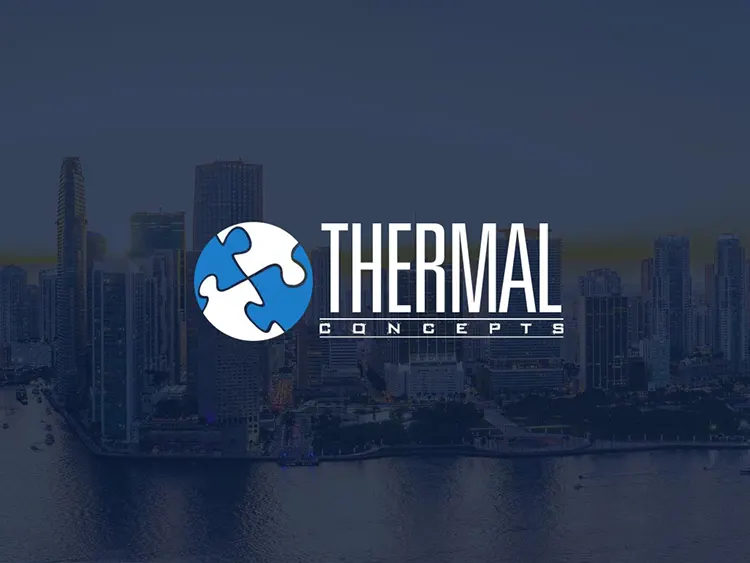Keeping commercial buildings cool is essential for comfort and productivity, but running HVAC units can lead to sky-high energy bills.
As any facility manager knows, HVAC units are often the largest single energy expense for a commercial building.
Fortunately, choosing and implementing the right cooling solutions can significantly reduce energy consumption and drive down costs for businesses and industrial facilities.
Here are the top five smart strategies for efficient cooling and energy savings in commercial buildings.
#1 Optimize Your Existing HVAC System
New commercial HVAC units are a significant capital expenditure, often costing companies tens of thousands of dollars to install a new system.
Before making this investment, ensure your current systems are performing at their peak.
Neglected systems work harder, consume more energy, and are prone to premature failure. Enlisting a trained technician to perform regular maintenance and tune-ups can enhance your unit’s efficiency, reduce energy demand, and lower costs.
A preventive maintenance plan will ensure your systems operate closer to their designed efficiency, preventing energy waste caused by dirty coils, low refrigerant, or clogged filters.
This fixed, predictable expense is much lower than repair or replacement costs, ensuring every dollar spent on your HVAC unit is deployed to its fullest potential.
At the same time, consider leveraging smart technology, like programmable thermostats and building automation solutions that go beyond simple scheduling by optimizing system start/stop times based on occupancy patterns and ambient conditions.
These innovative solutions can maintain precise temperature bands, preventing excessive cooling and the energy drain of frequent system cycling.
#2 Upgrade to High-Efficiency Components
When it’s time to replace or upgrade individual components or entire systems, choosing energy-efficient options can lead to substantial long-term operational savings and improved performance.
Specifically, consider integrating:
Variable Speed Technology
Unlike traditional single-speed systems, which run at full capacity and then shut off, variable-speed units adjust their output to precisely match the cooling demand.
Advanced Thermostats
These devices offer more than just basic programming; many include features like adaptive learning to optimize schedules, remote access via Wi-Fi for adjustments from anywhere, and detailed energy usage reports.
Zoned Cooling Solutions
Consider options like ductless mini-split systems, which provide highly efficient zoned cooling, or inverter ACs.
These are excellent for targeting specific areas, such as individual offices or meeting rooms, ensuring comfort where needed while significantly reducing energy waste in unused or less-occupied spaces.
High-efficiency components come with a cost, but their long-term efficiency gains and cost savings are worth the investment when replacing or upgrading an outdated HVAC system.
#3 Improve Building Insulation and Sealing
Your building’s envelope (its roof, walls, windows, and foundation) is the first line of defense against unwanted warm or cold air entering your facility.
Its impact on your HVAC system may seem passive, but its outsized impact is significant.
The Environmental Protection Agency (EPA) estimates that building owners can save up to 20 percent on their energy bills by properly sealing and insulating their facilities.
Improve building insulation in ceilings, walls, attics, and floors to minimize cooling losses and reduce the thermal load on your HVAC system. Proper insulation acts as a barrier, slowing the transfer of heat from the outside to the inside, meaning your cooling system doesn’t have to work as hard or run as long to maintain comfortable indoor temperatures.
Meanwhile, don’t overlook the benefits of insulating the commercial HVAC equipment, including ductwork and piping.
This is particularly important in environments with high heat loads or where ductwork passes through unconditioned spaces, such as data centers, hospitals, or industrial facilities, to control heat loss and improve system delivery efficiency.
Finally, thorough weather stripping and caulking should be implemented around the facility’s windows, doors, pipe penetrations, and other potential air leak points. This will help reduce drafts and create a more tightly controlled environment so your HVAC system doesn’t have to work as hard to achieve your desired climate control settings.
#4 Utilize Passive and Advanced Cooling Techniques
Think beyond traditional air conditioning to incorporate strategies that reduce the cooling load naturally or use alternative, highly efficient cooling methods.
For example, strategically place window awnings, reflective films, or external shading elements to reduce direct sunlight exposure through windows. When appropriate, incorporate cross-ventilation strategies that adjust airflow to cool spaces during milder conditions or at night, reducing the load on HVAC units.
To be sure, passive cooling techniques probably can’t replace your HVAC units completely, but they can lighten the load and lower the cost of keeping spaces warm in the winter and cool in the summer.
#5 Embrace Automation
Modern technology offers powerful tools to fine-tune your cooling systems for maximum efficiency, responsiveness, and energy savings through intelligent control.
To achieve this, leverage smart technology within your building automation system, including the strategic placement of sensors.
For example, occupancy sensors can detect whether a space, like a classroom, conference room, or corridor, is in use and adjust HVAC accordingly, preventing the unnecessary cooling of empty areas.
Consider installing an Energy Management System (EMS) with your building automation.
An EMS can coordinate overall energy usage, strategically timing HVAC operations to take advantage of lower off-peak utility rates.
A Cooler Building and a Better Bottom Line
Climate control matters and is often a significant expense for commercial building managers.
Lowering costs without compromising comfort often involves a combination of the strategies described here, tailored to your specific building type, climate, and operational needs.
The right HVAC partner can help determine which moves are right for you.
The experts at Thermal Concepts can help you assess your current systems, identify opportunities for energy savings, and implement the right technologies to reduce costs and optimize performance.
Contact us today for a consultation and let us help you design a cooler, more cost-effective future for your facility.




